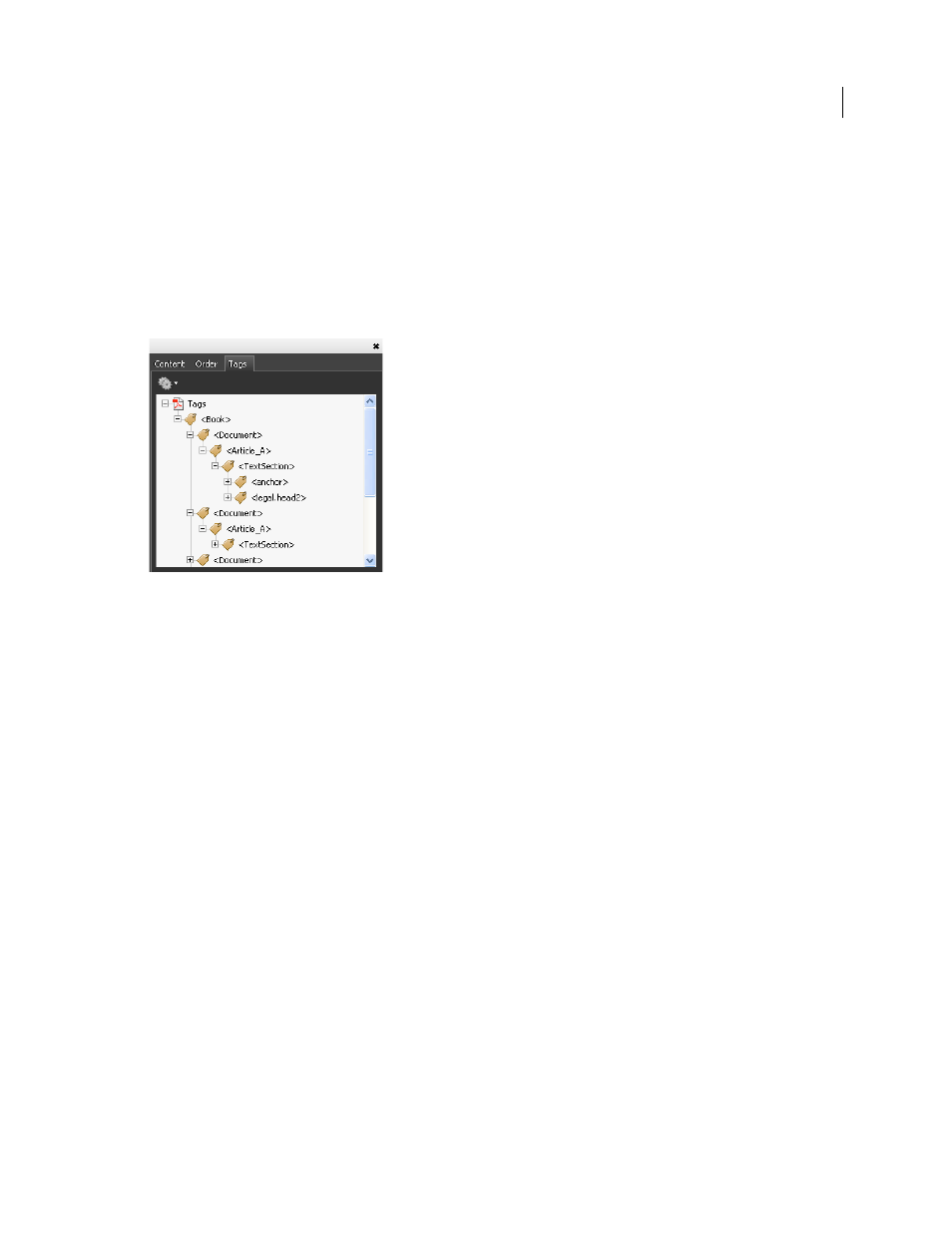Understanding and optimizing reflow – Adobe InDesign CS5 User Manual
Page 525

519
USING INDESIGN
Last updated 11/16/2011
For people who are not able to see or decode the visual appearance of documents, assistive technology can access the
content of the document reliably by using the logical structure tree. Most assistive technology depends on this
structure to convey the meaning of content and images in an alternative format, such as sound. In an untagged
document, no such structure exists, and Acrobat must infer a structure based on the reading order choices in the
preferences. This method is unreliable and often results in page items read in the wrong order or not read at all.
The tags appear on the Tags tab in Acrobat 6.0 and later, where they are nested according to the relationship
definitions for the tagged elements. You cannot edit tags in Acrobat Standard. If your work requires you to work
directly with tags, you should upgrade to Acrobat 9 Professional. For more information, see Acrobat Help.
Logical structure tree on the Tags tab in Acrobat 9
Note: Tags used in Adobe PDF files can be compared to tags in HTML and XML files. To learn more about basic tagging
concepts, see any of the many references and text books available in bookstores, in libraries, and on the Internet.
Understanding and optimizing reflow
You can reflow a PDF document to read it on handheld devices, smaller displays, or standard monitors at large
magnifications, without having to scroll horizontally to read each line.
When you reflow an Adobe PDF document, some content carries into the reflowed document and some doesn’t. In
most cases, only readable text reflows into the reflowed document. Readable text includes articles, paragraphs, tables,
images, and formatted lists. Text that doesn’t reflow includes forms, comments, digital signature fields, and page
artifacts, such as page numbers, headers, and footers. Pages that contain both readable text and form or digital
signature fields don’t reflow. Vertical text reflows horizontally.
As an author, you can optimize your PDF documents for reflow by tagging them. Tagging ensures that text blocks
reflow and that content follows the appropriate sequences, so readers can follow a story that spans different pages and
columns without other stories interrupting the flow. The reading order is defined by the structure tree, which you can
change in the Structure pane.